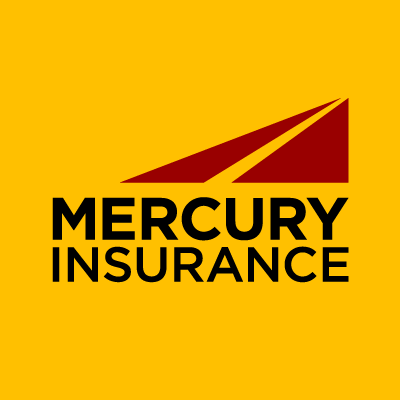Road trips are a fantastic way to escape and explore exciting new adventures. But if you’re an owner of an electric vehicle (EV), you might wonder: Can I take an electric car on a road trip? You can do it, but strategic planning is key. In this article, we’ll show you how to plan an EV road trip so you can enjoy the journey without worrying about running out of charge or missing a charging station.
How to Plan a Trip with an Electric Car
Planning a road trip with an electric car might take a little more thought than a traditional gas-powered trip.
“It cannot be understated that to successfully travel in an EV, you must plan out your trip. Mapping out stops around EV charging stations and taking the time to make sure your car is prepared by carefully checking your vehicle’s components will help you avoid potential headaches.” - Steve Ward, Director, Strategic Planning and ERM
EV charging stations aren’t as ubiquitous as gas stations yet, so it’s smart to map out where you’ll charge before hitting the road. Look for chargers along your route and plan your stops around them. It’s especially important if you’re traveling through rural areas, where charging options might be few and far between.
When it comes to planning your route, let technology do the heavy lifting. Apps like PlugShare and A Better Routeplanner (ABRP) are lifesavers for EV drivers. Other apps like ChargePoint and EVgo are also great for finding chargers, managing payments, and checking charging progress.
However, not every charger works with every EV, so double-check compatibility before you pull up to a station. Different EVs use different plug types:
- CCS Combo: This is standard for most newer EVs.
- CHAdeMO: This works for some older models like the Nissan LEAF.
- Tesla Superchargers: These are primarily for Teslas, although some are now open to non-Tesla EVs.
How Far Can You Drive an Electric Car?
Several things impact how far your car can go before needing a charge. Some are within your control, while others depend on the conditions of your trip:
- Battery size: Larger batteries generally mean a longer range. For example, a Tesla Model S with a 100 kWh battery can go significantly farther than a smaller EV like the Nissan LEAF with a 40 kWh battery.
- Terrain: Driving on flat highways is much more energy-efficient than climbing hills or mountains, which can quickly drain your battery.
- Weather: Extreme temperatures—both hot and cold—can reduce range. Cold weather impacts battery efficiency, while hot weather may require extra energy for cooling.
- Driving habits: Speeding, rapid acceleration, and hard braking can all use up more energy. On the flip side, adopting eco-driving techniques, like gentle acceleration and regenerative braking, can help maximize your range.
The exact range depends on your EV model, but many modern EVs are built to go impressive distances. Here are some examples to give you an idea:
- Tesla Model 3: Up to 363 miles on a full charge.
- Hyundai Ioniq 5: Between 220 and 303 miles, depending on the configuration.
- Chevrolet Bolt EV: Around 259 miles.
- Nissan LEAF: 149 to 212 miles, depending on the battery size.
EV Route Planning: Finding Charging Stations on the Road
Before hitting the road, there are three types of EV charging that you should know about:
- Level 1 charging: Most electric vehicles come with a Level 1 portable charger that uses a standard 120-volt household outlet. Level 1 is the slowest type of charging, providing your EV with 3-5 miles of range per hour.
- Level 2 charging: Level 2 charging stations can be installed in your home or found in public places like shopping centers, rest stops, hotels, and more. These chargers plug into a 240-volt outlet and provide your EV with 25-30 miles of range per hour.
- DC fast charging: DC fast charging is the quickest method, offering 180-240 miles of range per hour. These charging stations are only available in public places like office buildings, community centers, and grocery stores.
As mentioned earlier, apps like PlugShare, A Better Routeplanner (ABRP), and ChargePoint are your best friends for finding charging stations. They’ll show you where chargers are located, what type they are, how much they cost, and even if they’re currently in use.
Electric Car Charging on the Road
When it comes to charging on the road, there are some valuable tips you need to know:
- Have a backup charging option: Whenever you arrive at a charging station, it could be occupied or out of service. Ensure there’s another station nearby, or bring along a portable charger.
- Plan charging stops around activities or meal breaks: With gas-powered cars, you can fill up your tank and be back on the road within minutes. That’s not the case with electric vehicles. You’ll have to practice patience when charging your EV. Even if you’re using a DC fast charger, you’ll still have to wait at least 30 to 45 minutes for a full charge. Find charging stations near restaurants, parks, historic buildings, or other attractions to pass the time.
- Watch out for environmental factors: Environmental factors such as strong winds, lower temperatures, and uphill drives can cause unexpected range loss. If you experience one of these factors on the road, plan for more charging stops and be conservative with your driving speed and HVAC consumption.
Most public chargers charge by the kWh (kilowatt-hour) or by the minute. Costs range from $10–$20 for a full charge at a DC fast charger, though some networks offer membership discounts or subscription plans. Charging at home is much cheaper, often costing just a few dollars for a full charge, especially if you use off-peak electricity rates. While public charging is more expensive, the convenience and speed of fast chargers make them essential for road trips.
EV Road Trip Tips for a Smooth Journey
Taking an EV on a road trip can be a fun and efficient way to travel, but it helps to have a few tricks up your sleeve to avoid common hiccups. Here are some tips to ensure your journey is smooth and stress-free.
Bring a Backup Charging Cable and Adapter
Not every charger on the road will match your EV’s connector, so carrying a backup cable or adapter is a smart move. Whether it’s a portable Level 1 or 2 charger for emergencies or an adapter for different plug types (like CHAdeMO), this small step can save you a big headache if you’re in a pinch.
Know Your Hotel’s Charging Policies
If you’re staying overnight, check if your hotel offers EV chargers. Call ahead to confirm availability, as they’re often first-come, first-served, and ask about fees. Apps like PlugShare can help you find hotels with charging stations along your route.
Maximize Your Range
Get the most out of your battery by driving efficiently:
- Use regenerative braking to recover energy when slowing down.
- Avoid hard acceleration and stick to steady speeds for better efficiency.
- Plan for terrain. Uphill climbs use more power, but downhill stretches can recharge your battery.
Auto Insurance Considerations for an Electric Vehicle Road Trip
Before you hit the road, take a moment to review your EV auto insurance policy. Make sure it’s up to date and includes coverage for things like accidents, theft, or unexpected events like hailstorms. Plus, many companies offer auto insurance discounts that you might qualify for as an EV owner, so be sure to ask your provider to see what you’re eligible for.
Also, electric vehicles can have unique needs when it comes to roadside assistance, so it’s worth checking with your insurer to see what’s covered. For example, you may need towing to the nearest EV charging station if your battery runs out.
Conclusion
Whether you’re road-tripping by yourself or with friends, there’s nothing like the open road to enhance your traveling experience. With a little preparation, driving an electric vehicle can add a whole new level of adventure to your journey.
Ready to hit the road? Learn more about EV ownership, trip planning, and insurance options with Mercury Insurance, and get started on your next adventure today!



